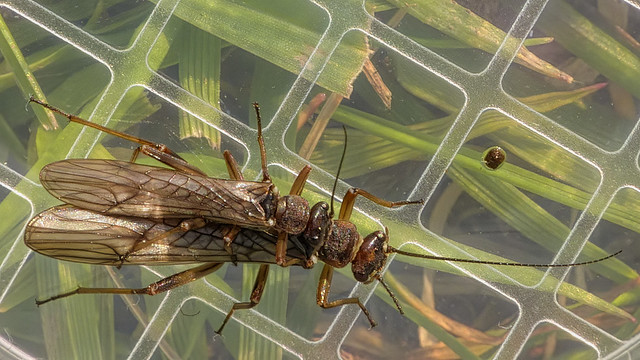Plecoptera

The Plecoptera, also known as stoneflies, are an order of insects in Europe with about 300 species, and they are one of the most primative of the insects. Intolerant to water polution, they are predominantly found in clean, fast-flowing streams and rivers. They range from 5 mm to 50 mm, featuring long antennae, two long cerci (tail-like appendages), and membranous wings folded flat over the body at rest. Key traits: The Nymphs are aquatic, with gills, feeding on algae, detritus, or small invertebrates (Perlodes species); the adults are dull brown or gray, short-lived (days to weeks), often weak fliers, emerging in spring or summer.
Their lifecycle (egg, nymph, adult) spans 1–3 years, with nymphs sensitive to pollution, making them bioindicators of water quality. Adults are herbivorous or non-feeding, playing a minor role in ecosystems but supporting aquatic food chains.
